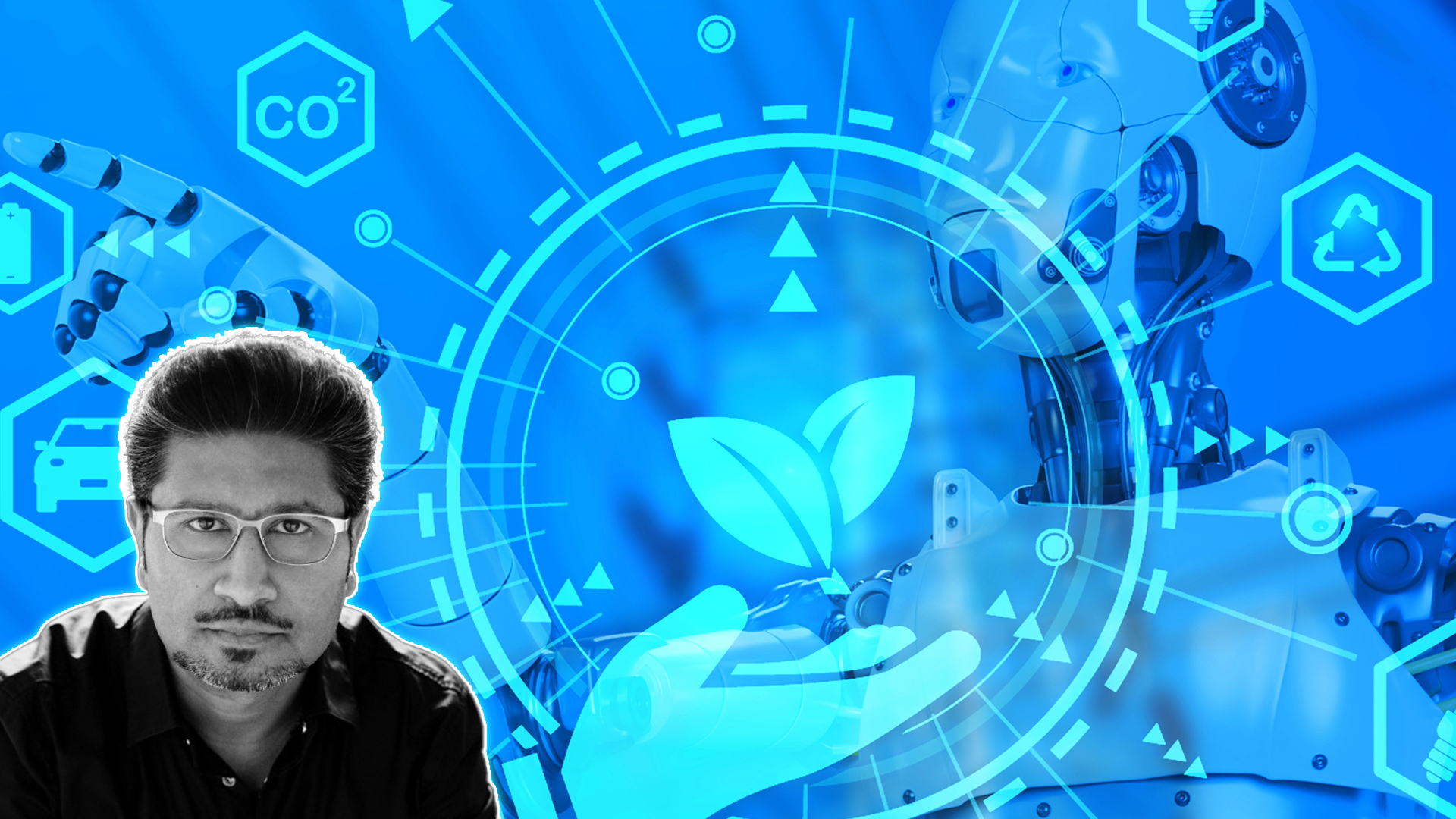
How Artificial Intelligence is Helping AVARA Media Deliver Unparalleled Learning Experiences
Regular readers of my blog know that Redwood is deeply invested in transforming learning through AI. We strongly believe in harnessing AI’s transformative power to enhance all aspects of producing and delivering advanced Learning & Development. The benefits are real and impactful, including personalized learning experiences, administrative automation, gamification-driven enhancements, unprecedented analytics, and virtual coaches.
As part of our effort to stay on top of the latest AI innovations, I recently had the opportunity to sit down with fellow Interactive Ontario board member Vikas Gupta, CEO of AVARA Media. AVARA is committed to delivering unprecedented learning experiences by creating the highest-quality Augmented Reality environments in the world – and exploiting AI as part of its production process.
Vikas generously shared his insight into how AI was revolutionizing the learning experience at AVARA and where he saw things going in the future.
Lydia Sani: You are the CEO of a technology company with an environmental focus, doing simply amazing work. What motivated you to choose this path?
Vikas Gupta: I have had a fulfilling career in the Interactive Digital Media industry. I used to tell people that my job was to bring happiness to others. However, I started questioning what my impact on the world would be. This led me to start my own company, utilizing my business knowledge and background to create an innovative and educational learning experience that aims to raise awareness about important environmental issues.
Lydia Sani: How do you leverage AI to help learners understand environmental challenges and opportunities?
Vikas Gupta: First and foremost, climate-related issues today are complex, and there’s no one-size-fits-all solution. We found that while there are all kinds of scientific studies and research papers, they are not always accessible to the average individual.
Everyone knows we have a dire situation ahead of us, but most people don’t know what to do about it. To help engage our learners, we use Augmented Reality, a powerful tool that can simplify complex information and make it more engaging. For maximum engagement, we’ve leveraged AI’s power and magic to provide an immersive, experiential connection to these issues.
Lydia Sani: Can you give me an example of a current AVARA project that has you really excited?
Vikas Gupta: We’re working on a massive project called Biinaagami, which is being developed in partnership with the Royal Canadian Geographical Society and Swim Drink Fish. It is all about preserving the Great Lakes.
But what makes it unique is that it is Indigenously guided. When the project launches this fall, it will comprise a dozen high-quality augmented reality experiences that provide the user with an exploration of discovery around all sorts of different facets of the Great Lakes.
For the first time, we are taking multi-generational Indigenous stories that are told from one ancestor down to the next generation to the next. We honour these stories by translating them into beautiful 3D graphics. The result is an immersive experience, driven by AI, that allows people to become part of these stories and learn from the Indigenous elders. I expect that it will reach a million students during the next two to three years.
Lydia Sani: That is exciting! You clearly have a deep commitment to transforming learning through AI. What has been the impact on AVARA as an interactive learning production company?
Vikas Gupta: First, I’m a technology entrepreneur. When I see emerging technologies, I view everything as an exciting opportunity. And so, I’ve been spending a considerable amount of my time watching, reading, and learning everything I can about AI.
We’ve started using AI within our organization to catalyze our development in various ways, creating exceptional opportunities. Given the sophistication of our productions—graphics, imagery, and so on—we have used AI to help amplify our team’s ideation efforts.
Of course, we have our own ideas that we input into AI tools. What comes back is amazing and helps broaden our thinking significantly. And so now, we have the advantage of combining two powerful elements: a sophisticated team with decades of experience and the benefits of everything that AI can bring to the table.
So that’s number one. Number two, we’re starting to use AI in a way that allows us to do in hours what would otherwise take weeks upon weeks to develop manually. Instead of eliminating jobs, AI has made us more efficient by streamlining virtually everything we do.
Finally, AI’s efficiencies allow our team time to think more about enhancing the human aspects of learning. The result is an enhanced user experience.
Lydia Sani: You mention having more time to focus on the human aspects of learning. What benefits do AI and AR bring to the learning experience?
Vikas Gupta: We use AI extensively in research because it allows us to learn complex subjects more quickly. Instead of going from website to website extracting and corroborating information, AI streamlines the process.
We condense all that information into snackable learning opportunities. When you engage with a subject in our Augmented Reality experiences and are presented with snackable bites of contextualized knowledge, your ability to retain what you learn is much greater.
Lydia Sani: How has your team responded to bringing AI into your production workflow?
Vikas Gupta: About a month ago, to help demystify AI, I brought my senior team to an AI training course. They spent a few days learning about AI, the incredible array of tools, and how to use them. I wanted this experience to inspire them, as opposed to a CEO telling them that they must use AI.
So, we started exploring various AI tools, with everyone conducting their own research. We created a master spreadsheet, and everyone entered the most powerful AI tools they had discovered. The entire team was encouraged to play and experiment with them.
We organized it based on the different kinds of tools currently available: video, graphics, music, and many others. As a result, we now have a spreadsheet of preferred AI tools that the entire team uses. We encourage everyone to use these AI tools wherever they help make their jobs that much easier, their productivity that much higher, and the overall quality of their work that much better.
Lydia Sani: Many fear the ramifications of widespread AI adoption. What’s your take on this?
Vikas Gupta: There was a time when there were security concerns about entering credit card information over the phone or through a website. And now, we’re storing credit card information everywhere. I think that we will get to the same place with AI. People generally fear the unknown.
That’s why I say get over the fear and embrace learning the various AI tools. Once you realize the power of this innovative technology and what you can do with it, the uncertainty and fear disappear. AI allows us to deliver higher value by doing higher-value work instead of mundane work.
When used effectively, AI enhances your work by allowing you to focus on creativity, innovation, and user experience—qualities that enhance your professional value in the workplace.
Lydia Sani: What AI strategies should Canada pursue to be at the forefront of this technology?
Vikas Gupta: I think Canada needs to make bigger and more aggressive investments in AI education. We also need to build out an AI ecosystem. We have so much talent and innovation in this country. Adequate venture capital would help fund the brightest emerging AI companies. We need to make our presence known globally so the rest of the world understands that Canadians will not be left behind.
Lydia Sani: Any final thoughts?
Vikas Gupta: There is a quote that I love: “The best way to predict the future is to create it.” And that means a lot of different things to different people. But in the context of this interview, it really is about not fearing the unknown, but embracing it.
And rather than being fearful, be excited about the untold possibilities. While AI might feel like a hurdle because it can seem complex, start one step at a time. Begin by learning some of the basic AI tools and see what those tools yield.
And that’s when the excitement begins. Then, you move on to the next tool. This is an incredibly powerful technology. Anyone in the Learning & Development industry should take every opportunity to learn all about it. That’s how stigma is removed. And that’s how you predict the future by creating it!

